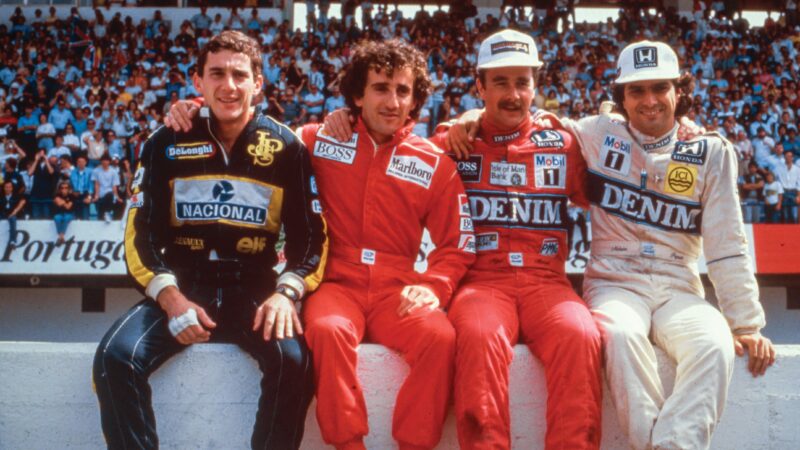1986 F1 season: Prost, Piquet, Senna and Mansell take the championship to the wire
Prost’s perfect day and Mansell’s heartbreak made for a gripping finale at the end of a captivating 1986 F1 season
Getty Images
“And look at that!” exclaimed Murray Walker. Eighteen laps from home, we’ll never forget how Nigel Mansell’s world title hopes disintegrated along with his left-rear Goodyear. It happened just after he’d lapped Philippe Alliot’s Ligier, in a shower of sparks. The Williams-Honda bucked at 190mph, Mansell somehow keeping the car in a straight line before it slithered to a stop, nudging a concrete barrier at the end of Adelaide’s Dequetteville straight. So cruel.
How Alain Prost then undercut both Mansell and Nelson Piquet, winning the race and snatching his second consecutive world title – one he admits is the most cherished of his four – enshrined his legend. Lucky? Yes, but there was so much more at play, in a race he recalls as one of his few perfect days in an F1 car. How he at first carefully managed his fuel load in trademark style, easing himself into contention; the puncture that put him on the backfoot; the nothing-more-to-lose charge, a reminder he was quick as well as clever; and then in the wake of Mansell’s misfortune and Piquet’s inevitable better-safe-than-sorry stop for fresh tyres, how he then made it home – just – with both arms aloft, before the McLaren spluttered out of gas. It’s among the most memorably dramatic F1 races of all time.

From left, Ayrton Senna, Prost, Nigel Mansell and Nelson Piquet at Estoril – F1’s fab four in ’86
DPPI
But it’s not just the finale; the whole season kept us gripped. Mansell, Williams and Honda, off the back of consecutive victories at the end of 1985, were now fully on song – only for Frank Williams to suffer the devastating pre-season road accident that would change his life for ever. The team pressed on, with added spice from Piquet, incoming and fired up from fading Brabham. The growing enmity between the new team-‘mates’ coloured Williams’ season, the pair dicing up nine wins between them in Patrick Head’s fabulous FW11 for a constructors’ title. Mansell’s British GP defeat of Piquet, decided when Nelson fluffed a gearchange, was sweet amid the personal rancour.
Malignant tension infested the McLaren camp too, design master John Barnard splitting for Ferrari before Monza. But the era was made for Prost. A new fuel restriction of 195 litres per race required a subtle right foot and iron discipline to know when to push or save. Outgunned by the Williams pair, how he remained in contention was the vital context to his Adelaide ‘luck’.
There was more, from the heart of F1’s first turbo era that only deepens in its rose-tinted hue with every passing year. Ayrton Senna’s eight pole positions in his Renault-powered Lotus, and beating Mansell to the line at Jerez by 0.014sec – the closest finish since Monza ’71; Gerhard Berger’s Benetton breakthrough in Mexico, thanks to his long-lasting Pirellis (oh the irony!); and 200,000 turning out to see Piquet win the first GP held behind the Iron Curtain, as the Hungarian GP took its bow. The circuit was derided as ‘Mickey Mouse’ at the time. It’s an old-school classic now. Perspectives change – but the turbocharged drama of 1986 will never be an exaggeration.